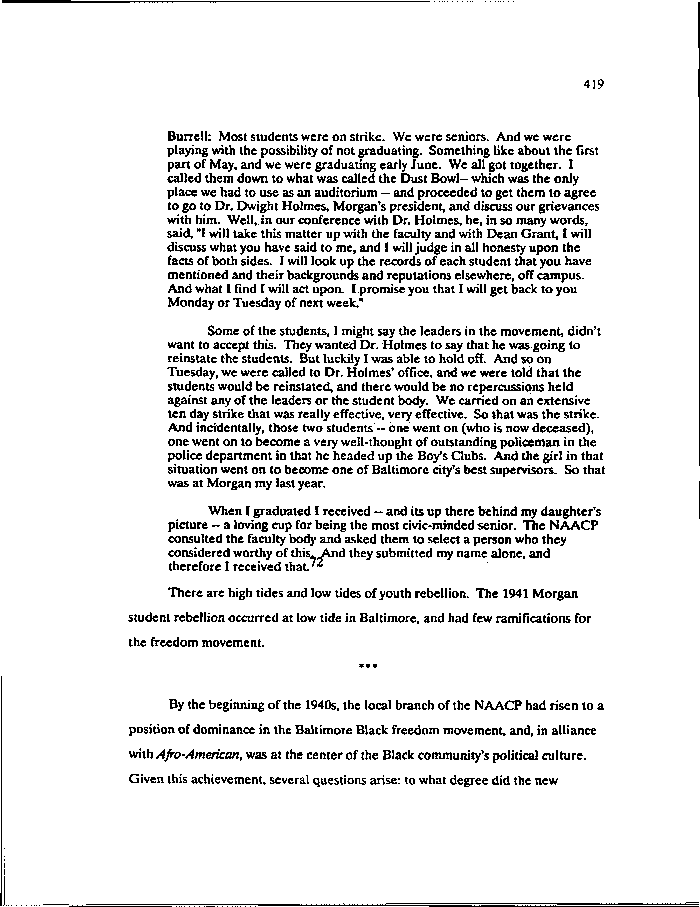|
419
Burrell: Most students were on strike. We were seniors. And we were
playing with the possibility of not graduating. Something like about the first
part of May, and we were graduating early June. We all got together. I
called them down to what was called the Dust Bowl- which was the only
place we had to use as an auditorium — and proceeded to get them to agree
to go to Dr. Dwight Holmes, Morgan's president, and discuss our grievances
with him. Well, in our conference with Dr. Holmes, he, in so many words,
said, "I will take this matter up with the faculty and with Dean Grant, I will
discuss what you have said to me, and I will judge in all honesty upon the
facts of both sides. I will look up the records of each student that you have
mentioned and their backgrounds and reputations elsewhere, off campus.
And what I find I will act upon. I promise you that I will get back to you
Monday or Tuesday of next week."
Some of the students, I might say the leaders in the movement, didn't
want to accept this. They wanted Dr. Holmes to say that he was going to
reinstate the students. But luckily I was able to hold off. And so on
Tuesday, we were called to Dr. Holmes' office, and we were told that the
students would be reinstated, and there would be no repercussions held
against any of the leaders or the student body. We carried on an extensive
ten day strike that was really effective, very effective. So that was the strike.
And incidentally, those two students'— one went on (who is now deceased),
one went on to become a very well-thought of outstanding policeman in the
police department in that he headed up the Boy's Clubs. And the girl in that
situation went on to become one of Baltimore city's best supervisors. So that
was at Morgan my last year.
When I graduated I received - and its up there behind my daughter's
picture - a loving cup for being the most civic-minded senior. The NAACP
consulted the faculty body and asked them to select a person who they
considered worthy of this. And they submitted my name alone, and
therefore I received that. 2
There are high tides and low tides of youth rebellion. The 1941 Morgan
student rebellion occurred at low tide in Baltimore, and had few ramifications for
the freedom movement.
By the beginning of the 1940s, the local branch of the NAACP had risen to a
position of dominance in the Baltimore Black freedom movement, and, in alliance
vriih Afro-American, was at the center of the Black community's political culture.
Given this achievement, several questions arise: to what degree did the new
|

